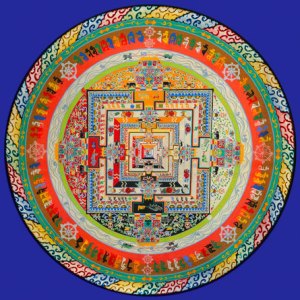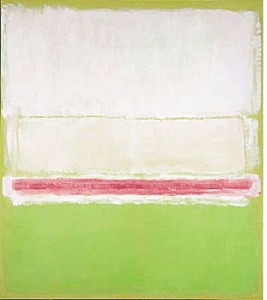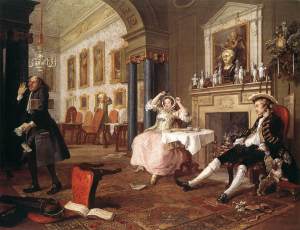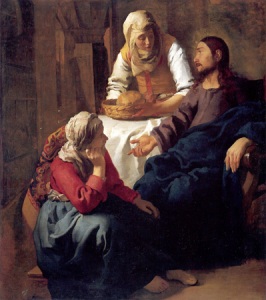Over the course of 32 years Iri and Toshi Maruki created fifteen panels depicting the horrors of the atomic bomb and everything it encompassed. They are considered the artists of the atomic bomb. I first learned of these panels when I was 19, and couldn’t understand the implication from the fuzzy image on my computer screen. I had a lot of trouble finding adequate pictures for this entry, but please go to a library or seek out the references at the end of this entry to find a better image than what I have given. It is difficult to describe how I feel about these works, as it seems more of an afterthought. Artistically they are incredible. Emotionally they are devastating.
I first learned of them through a small interview clip online. I heard a translated quote from Iri Maruki, saying how he did not want to paint this subject, but it was not up to him. The idea that the subject matter is so compelling that it must be painted is something I will never forget. I myself paint because if I don’t I end up dreaming of paintings, but what the Maruki’s wittnessed is a million times stronger. Although I couldn’t see the painting clearly first, his words drove me to find clearer pictures, and when I return to Japan one of my first stops will be Saitama, where there is a museum with their works.
Iri Maruki was born in 1901 in Hiroshima, Japan. He became an artist specializing in suiboku-ga, or India ink painting. His wife Toshi was born in 1912 in rural Hokkaido, and became a popular illustrator and oil painter. Both eventually moved to Tokyo, met, and were married in 1941.
During WWII Iri was drafted into the Japanese army, but then told he was unfit because of a large birthmark across half his face. Both artists opposed the war, and refused government pressure to paint patriotic military paintings. They were denied art supplies and lived in poverty for the whole of wartime.
On August 7th, 1945, one day after the first atomic bomb was dropped on Hiroshima the Maruki’s learned of the bomb and immediately set out for Hiroshima. Iri’s family still lived there and they spend three days traveling towards the ruins.
Iri Maruki described the feeling of traveling into another world. They found their family members, and helped the survivors for a time. When they eventually returned to Tokyo, Iri and Toshi Maruki realized they could no longer paint anything happy. They both described it has a darkness that hung in their paintings, and soon they realized they must confront this darkness. Just three years after they had traveled to devastated Hiroshima, Iri and Toshi Maruki decided to paint what they had seen.
The process was daunting. Toshi stripped in front of a mirror and drew herself and her husband in various poses. They tacked up sketches upon sketches around their home until they were surrounded by mangled bodies, and eventually decided upon a large paneled painting. They worked with inks, charcoal, and some oil paint. They came upon their system of painting together haphazardly. First Toshi would paint a figure, and Iri would say it was too clear or defined, and paint over it, muddying the painting. Toshi would say it was too muddied, and paint over the figure again. They would go back and forth in this manner, mostly in silence until something much greater than themselves emerged on the paper. Their first painting was named Ghosts.
“When our first painting was exhibited, word got around that we had painted the bomb and many came. For most of them it was the first time they had seen the bomb. the subject was something we saw often in Hiroshima, people walked with their arms outstretched, like a procession of ghosts. Their skin hung like rags they dragged their burned bodies falling and piling onto one another. Groaning and dying. There was no way to tell one charred face from another. Voiced turned cry and hoarse, friend introduced one another, but they still didn’t recognize each other.” -Iri Maruki
By the mid 1950s they had painted almost half of their collection. Originally they thought they were done with the first painting, but the survivors of the atomic bombs came to them and asked them to continue.
A massive change for them came in 1970, when they toured the US with their paintings. During this time they dealt with their long harbored feelings of resentment towards Americans, and also opened their eyes to many more atrocities in the world. It was after that trip that these two artists changed their subject matter and painted the deaths of American prisoners of war at the hands of the Japanese. This painting is the most powerful to me because while every single person is in pain, and the well defined lines of blame are blurred and full of shame. Everyone is to blame, and everyone is hurt.
The last Hiroshima Panel was finished in 1982. Together they painted the sight of Hiroshima after the bomb, the actions afterward, the pollution of the earth by war, the Koreans and Americans who perished, and the sincerity of the anti war efforts. During this large span of time Iri and Toshi Maruki enjoyed their separate art careers, but became known as the artists of the atomic bomb. They helped educate the next generation and promoted peace their entire lives.
Here are some links on their works. The first is a documentary you can rent on YouTube for three dollars. I highly recommend you spend three dollars.
http://www.youtube.com/movie?v=iKgkwIxZH1M&feature=rental_reminder
http://imaginationwithoutborders.northwestern.edu/maruki-toshi-and-iri





















